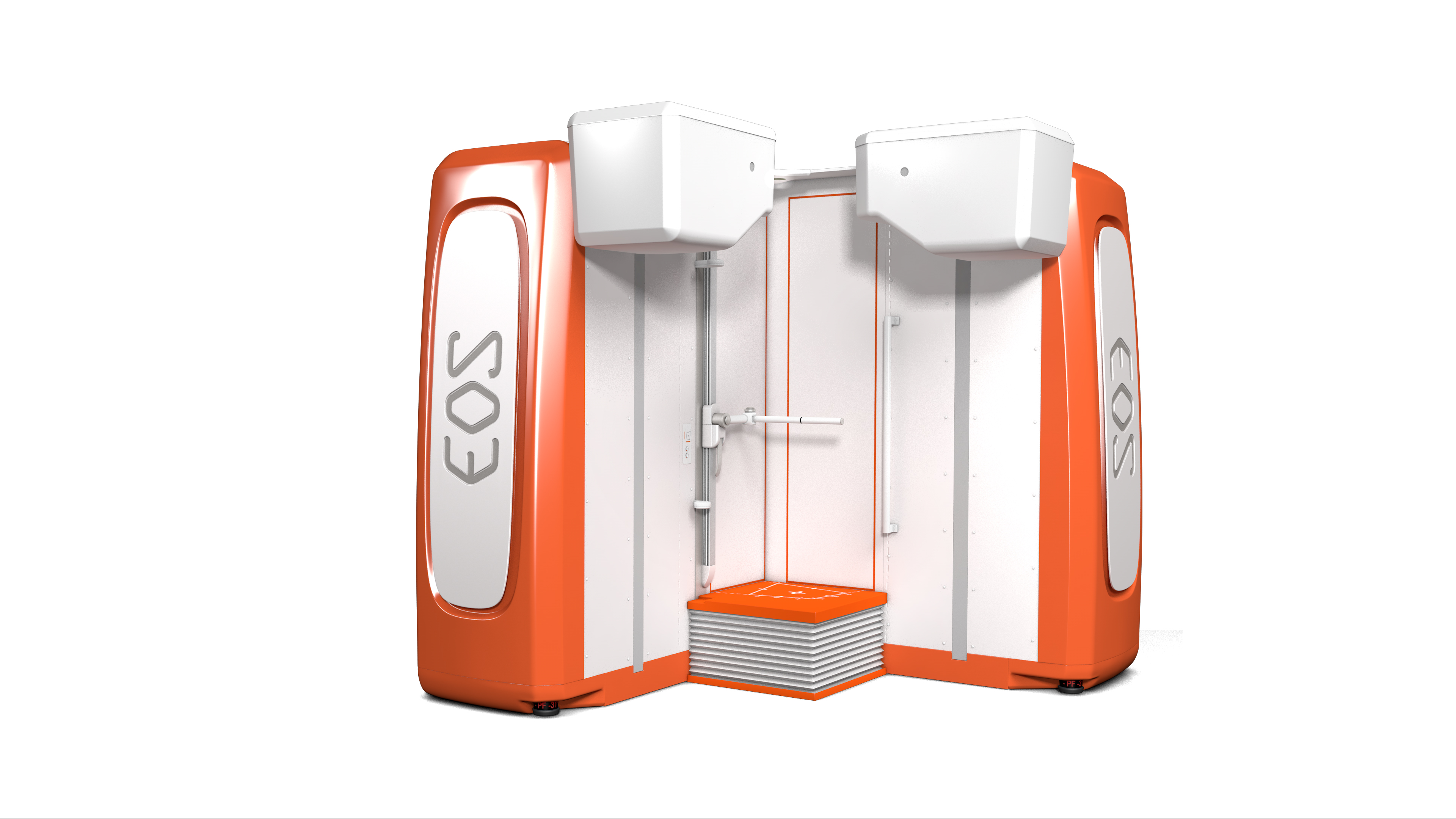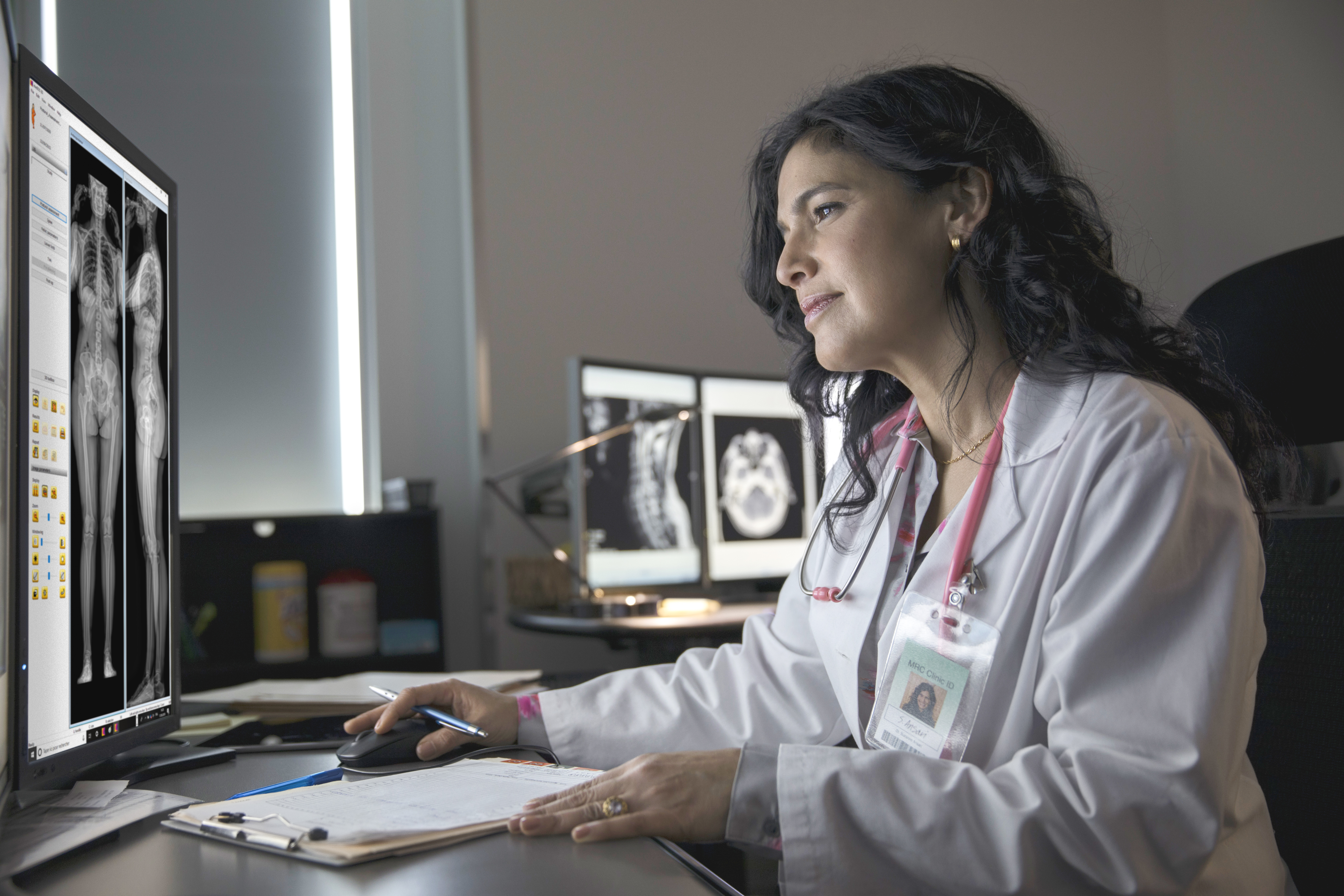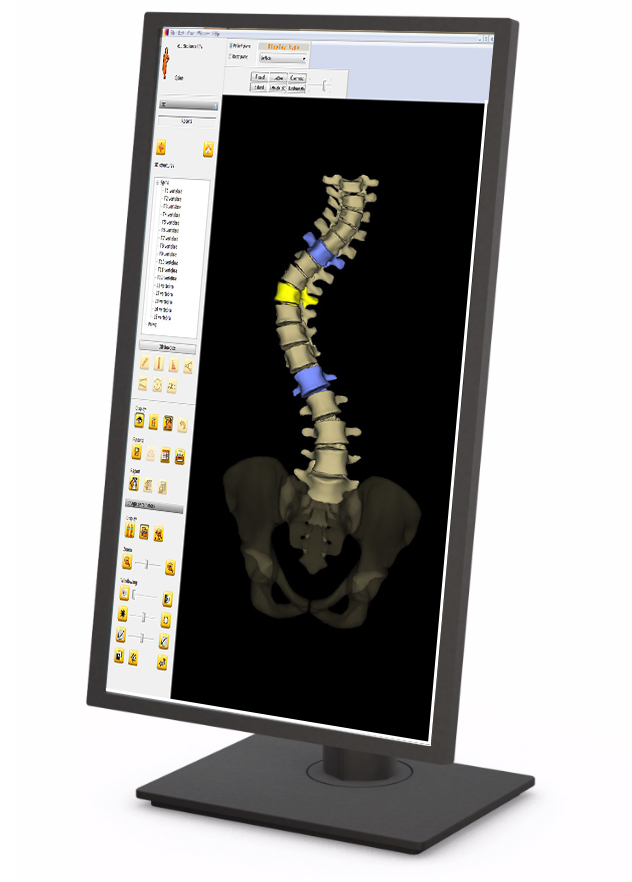UT Ortho – EOSedge

EOSedgeTM 2D/3D imaging system
Low dose, high-quality imaging for orthopedic care
At UT Ortho, we believe in providing our patients with the best care and services, which is why we’re proud to offer the EOSedge system at Memorial Hermann Orthopedic & Spine Hospital.
EOSedge is a state-of-the-art, low-dose 2D/3D X-ray imaging system used for the management of orthopedic conditions. The exam allows our physicians to see the interaction between the joints and the rest of the musculoskeletal system, particularly the spine, hips, and legs.
The system uses two X-ray beams to scan the patient, creating two high-quality images of the entire body or a specific region of the body. The images can be used to generate 3D models and measurements,which provide a three-dimensional understanding of a patient’s medical condition and its complexity. This allows our doctors to make an accurate evaluation and tailor treatment plans for each patient.
Immediate 2D results, 3D data when necessary
EOSedge produces high-quality, digital X-ray images that are immediately available for you and your physician to review after the scan, which takes 10-25 seconds on average. The total exam time takes about 4 minutes including exam preparation.
For some patients, 3D information may be requested by the doctor, in which case a trained EOS radiology technician will generate a 3D model using a special computer program. It can take about 1 to 3 days for the 3D data to be generated.
Safe imaging is our top priority
We take every precaution to reduce radiation exposure across all imaging tests and exams. EOSedge is yet another tool that enables us to provide the best imaging services while reinforcing our commitment to safety and low dose imaging options for our patients.
EOSedge also has a unique setting called Flex DoseTM that adjusts the amount of radiation the patient receives along the body. This setting minimizes exposure in areas of the body whenever possible, while still delivering the high-resolution images needed for our doctors to make treatment decisions.
Reducing dose is particularly beneficial for pediatric patients that are more sensitive to the cumulative effects of radiation. For this reason, EOSedge can reduce radiation exposure to even lower levels thanks to a setting called MicroDose. When the system operates on the Micro Dose setting, it emits even less radiation than a standard exam (equivalent to about a day of natural background radiation on Earth)1 and is still capable of producing 3D models and measurements for assessing global skeletal deformities in follow-up pediatric examinations.
High-resolution images in multiple positions
With traditional imaging techniques, patients often need to lie down or hold an uncomfortable pose to get the best image. With EOSedge, patients are able to be scanned while standing or in a seated position. This allows the doctor to examine the natural posture, as well as the ways that the spine, hips, and lower limbs are positioned in relation to one another.
When necessary, 3D information can be captured in an upright, weight-bearing position. And because orthopedic disorders are three-dimensional conditions, it’s important that doctorsare able to examine images in 3D as well.
Accurate imaging for diagnosis and surgery (when necessary)
In addition to reduced radiation dose, clear images and convenient exams, the unique perspective provided by EOSedge allows doctors to get a more complete picture of a patient’s condition to provide a precise diagnosis and to gather detailed information should surgical interventions become necessary.
The 3D models and software can assist surgeons by helping them to plan – and in some cases, even simulate – spine, hip or knee surgical procedures to better understand how they will be performed. Ultimately, EOSedge aligns with our mission to provide exceptional patient care by delivering low dose exams, high quality images and 3D information when needed.
